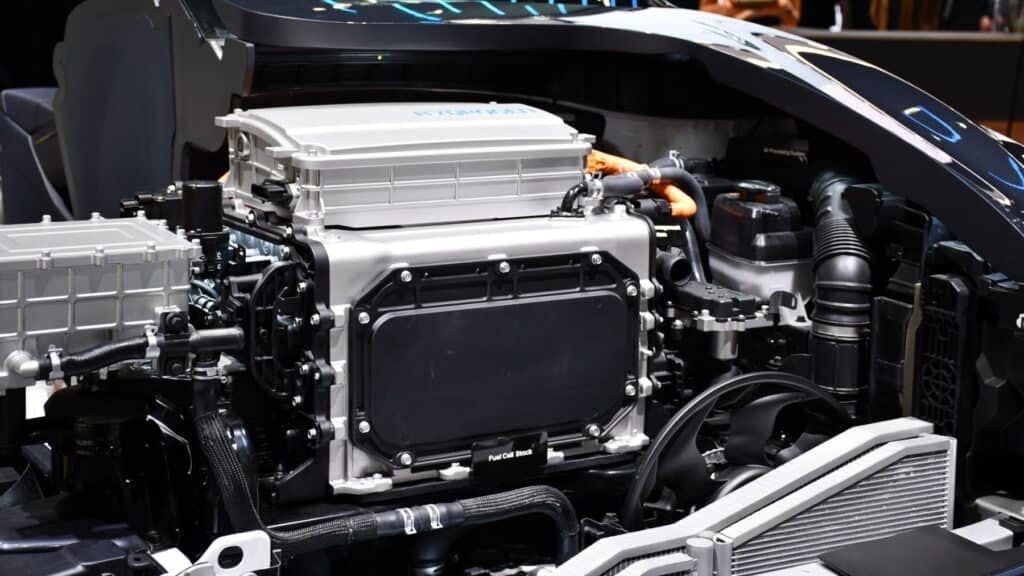
Waste Not, Want Not: Hyundai’s Hydrogen-Fueled Future
Remember the good ol’ days of Back to the Future? Picture this: Doc Brown zipping around in his DeLorean, fueled by the power of a nuclear reactor that, well, you don’t want to know where the fuel comes from. Now, imagine a similar futuristic twist, but this time, it's Hyundai that’s capturing the essence of innovation—turning your leftover pizza and that half-eaten salad into clean, green hydrogen power! Yes, folks, Hyundai is going all Mr. Fusion on us, and it’s time to dive into this quirky and inspiring tale of waste turning into wonder.
A Major Transition to Hydrogen
In a world increasingly concerned about fossil fuels, South Korea’s Hyundai is stepping into the hydrogen arena with gusto. Not just any hydrogen, but a sustainable version that’s not going to leave you feeling guilty about your carbon footprint. The company’s plant in Georgia is already rolling out hydrogen fuel-cell trucks for its internal logistics operations. Imagine a fleet of trucks running on the power of hydrogen produced from, you guessed it—food scraps!
According to Jim Park, Hyundai’s head of commercial vehicles and hydrogen business development for North America, this is a game changer. With hydrogen fuel-cell technology, these trucks not only have a better range (goodbye, range anxiety!) but are also paving the way for what he describes as an “end-to-end solution.” It's like turning your trash into treasure, with a little help from science and a sprinkle of Hyundai magic.
The Science Behind the Scraps
So, how does Hyundai manage this quirky feat of turning yesterday's lunch into tomorrow's fuel? Enter anaerobic digestion, a scientific process that might sound like something out of a sci-fi movie but is quite real. This method takes organic waste—think your leftover burrito, banana peels, and all those wilted veggies—and breaks them down with microorganisms. In simpler terms, Hyundai is turning our food waste into biogas, which is then upgraded to biomethane by stripping away pesky CO2 and impurities.
But wait, it gets better! This biomethane is then reformed and reborn as hydrogen. It’s like a superhero origin story, where your uneaten salad becomes the hero of the hydrogen revolution. The best part? Hyundai claims this approach can create mini hydrogen production hubs in regions across the globe, cutting down on transportation costs and making hydrogen resource independence a realistic goal. Say goodbye to the days of shipping hydrogen across continents—your local food scraps might just fuel the next big thing!
The HTWO Grid and the Future of Hydrogen
To supercharge this vision of a hydrogen-powered society, Hyundai introduced HTWO Grid. This brand aims to streamline the hydrogen value chain, ensuring everything from production to storage is optimized. Imagine it as the ultimate hydrogen toolkit, ready to tackle the unique environmental challenges each region faces. With a hefty investment of 5.7 trillion won ($4.1 billion) over the next decade, Hyundai is not just dipping its toes into hydrogen; it’s making a splash!
Hyundai’s ambitions don’t stop with trucks. The company envisions hydrogen powering trains, advanced air mobility, and even sea vessels. They’re like the mad scientists of the automotive world, dreaming big and pushing boundaries—while keeping the environment in mind.
A Double Positive Impact
But let’s pause for a moment and think about the implications here. Hyundai’s plan to turn waste into hydrogen isn’t just about creating clean energy. It’s a double whammy! We’re not only tackling the problem of waste pollution, but we’re also reducing the reliance on traditional fossil fuels. It’s like hitting two birds with one hydrogen-fueled stone.
Imagine the day when your neighborhood compost bin could be powering the local bus system or, dare we dream, your car! That’s the kind of future Hyundai is gunning for—one where waste is not merely a burden but a resource. The company’s commitment to achieving net-zero emissions by 2045 is a bold promise, and with initiatives like this, they’re on the right track.
Challenges Ahead
Of course, as exciting as this hydrogen future sounds, there are bumps on the road. The lack of refueling infrastructure and mass-market applications means that widespread adoption might take a little longer than we hope. It’s like dreaming of a world with flying cars but still waiting for that first jetpack to become commercially viable.
Nonetheless, Hyundai’s push into the hydrogen economy is undoubtedly an exhilarating development in the automotive world. With innovative solutions that turn food scraps into fuel, the future is looking brighter—and a lot quirkier.
So, the next time you’re tossing out those leftovers, just remember: they might just power the next wave of eco-friendly vehicles. Now that’s something to celebrate! Here’s to a world where our trash becomes treasure, and hydrogen power is as commonplace as gasoline—perhaps with a dash of Back to the Future flair.








